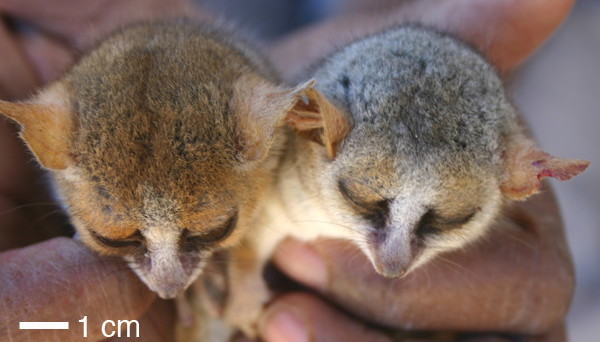
Two color morphs of the mouse lemur Microcebus griseorufus, found in the gallery forests of southern Madagascar. From Heckman et al. 2006 “Incongruence between genetic and morphological diversity in Microcebus griseorufus of Beza Mahafaly“.
 Fully expanded flower of the Japanese snake gourd Trichosanthes pilosa, showing the characteristic feather-like fringes along the petal margins. Picture courtesy of Ken Ishikawa, as used in de Boer et al. 2012 “Evolution and loss of long-fringed petals: a case study using a dated phylogeny of the snake gourds, Trichosanthes (Cucurbitaceae)“.
Fully expanded flower of the Japanese snake gourd Trichosanthes pilosa, showing the characteristic feather-like fringes along the petal margins. Picture courtesy of Ken Ishikawa, as used in de Boer et al. 2012 “Evolution and loss of long-fringed petals: a case study using a dated phylogeny of the snake gourds, Trichosanthes (Cucurbitaceae)“.
 Eyes of nocturnal and diurnal teleost reef fishes. From Schmitz & Wainwright 2011 “Nocturnality constrains morphological and functional diversity in the eyes of reef fishes“.
Eyes of nocturnal and diurnal teleost reef fishes. From Schmitz & Wainwright 2011 “Nocturnality constrains morphological and functional diversity in the eyes of reef fishes“.
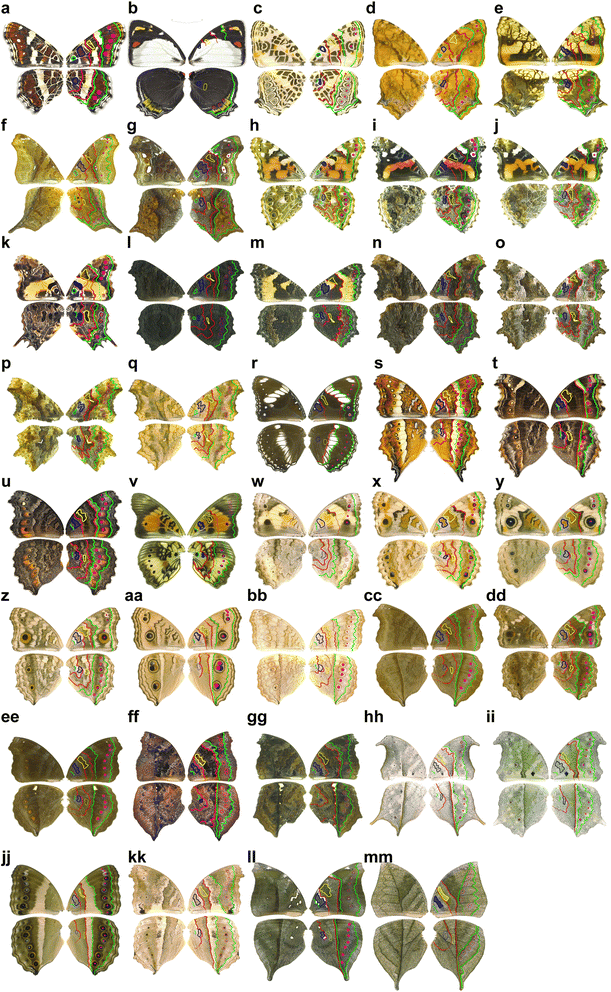 Ground plan of wing patterns in Nymphalinae butterflies. From Suzuki et al. 2014 “Gradual and contingent evolutionary emergence of leaf mimicry in butterfly wing patterns”.
Ground plan of wing patterns in Nymphalinae butterflies. From Suzuki et al. 2014 “Gradual and contingent evolutionary emergence of leaf mimicry in butterfly wing patterns”.
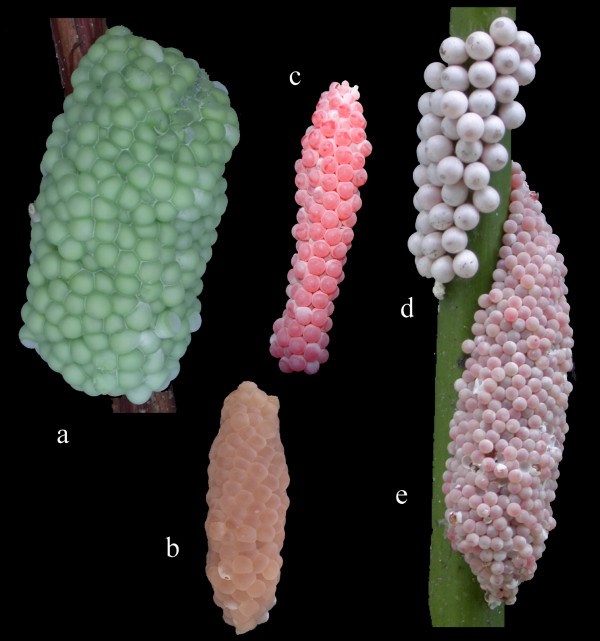 Egg masses of introduced and native apple snails in the continental USA. From Rawlings et al. 2007 “The identity, distribution, and impacts of non-native apple snails in the continental United States“.
Egg masses of introduced and native apple snails in the continental USA. From Rawlings et al. 2007 “The identity, distribution, and impacts of non-native apple snails in the continental United States“.
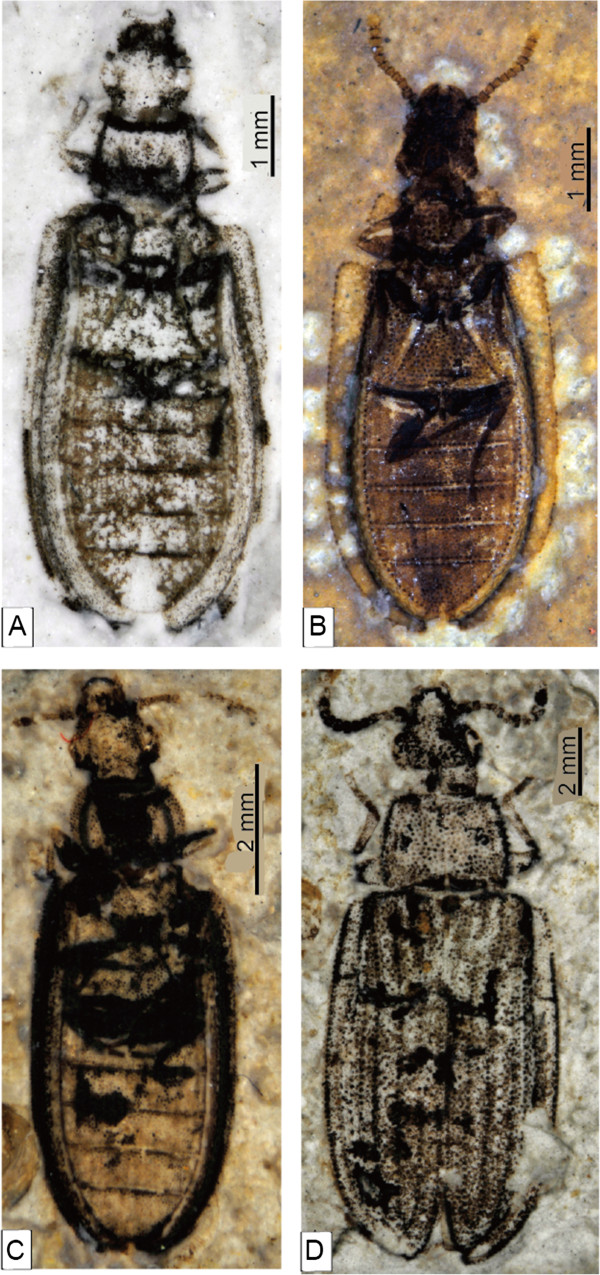 Fossils of the beetle family Ommatidae. From Tan et al. 2012 “New fossil species of ommatids (Coleoptera: Archostemata) from the Middle Mesozoic of China illuminating the phylogeny of Ommatidae“.
Fossils of the beetle family Ommatidae. From Tan et al. 2012 “New fossil species of ommatids (Coleoptera: Archostemata) from the Middle Mesozoic of China illuminating the phylogeny of Ommatidae“.
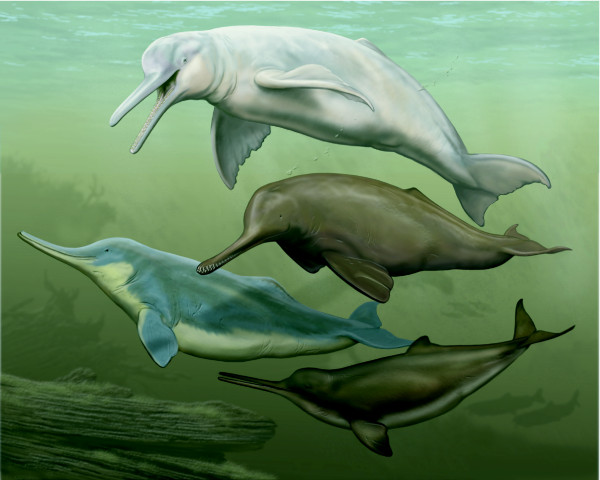 External similarities among the three extant river dolphins and the coastal Pontoporia. Illustration by C Buell, as used in Geisler et al. 2011 “A supermatrix analysis of genomic, morphological, and paleontological data from crown Cetacea“.
External similarities among the three extant river dolphins and the coastal Pontoporia. Illustration by C Buell, as used in Geisler et al. 2011 “A supermatrix analysis of genomic, morphological, and paleontological data from crown Cetacea“.
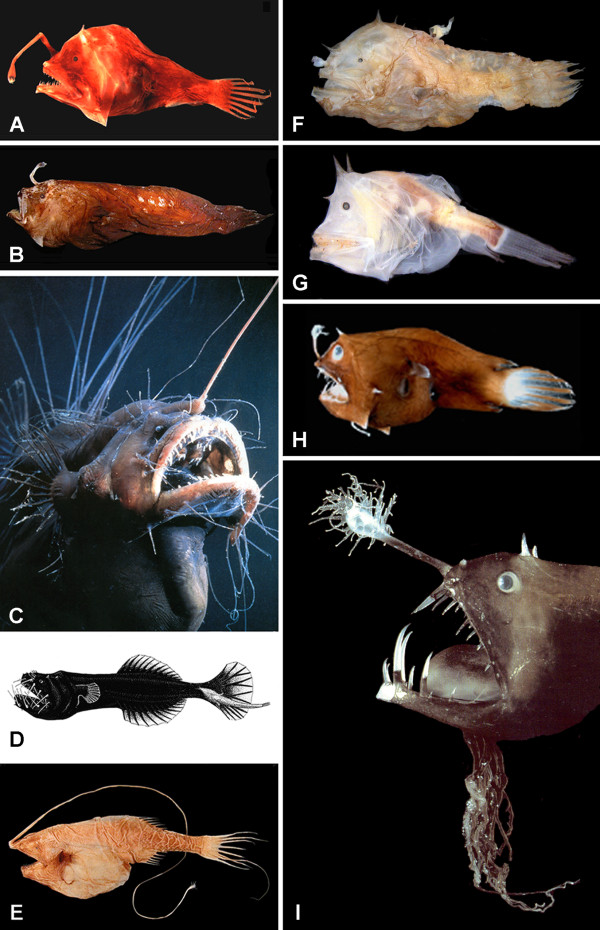 Representatives of the anglerfish family. From Miya et al. 2010 “Evolutionary history of anglerfishes (Teleostei: Lophiiformes): a mitogenomic perspective“. See paper for individual photo credits.
Representatives of the anglerfish family. From Miya et al. 2010 “Evolutionary history of anglerfishes (Teleostei: Lophiiformes): a mitogenomic perspective“. See paper for individual photo credits.
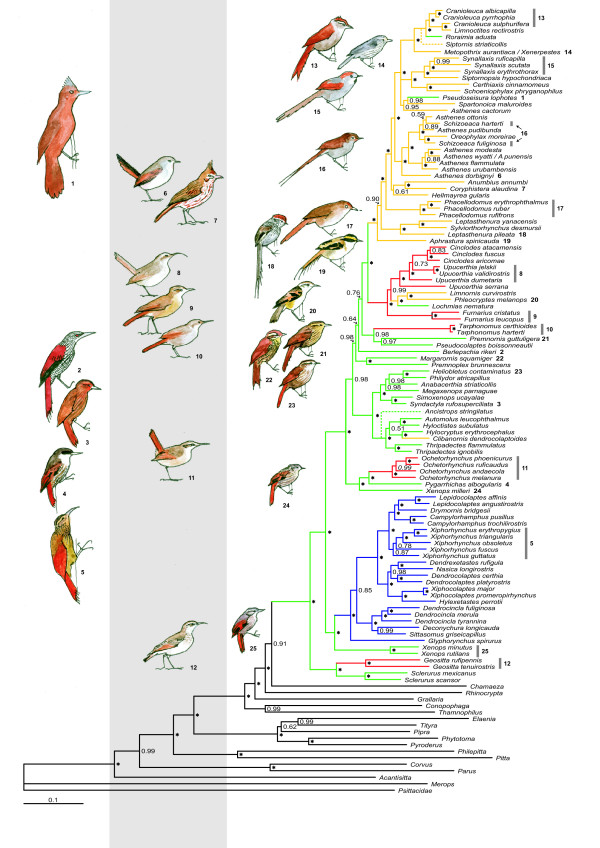
Phylogenetic relationships of the ovenbird-woodcreeper clade. From Irestedt et al. 2009 “Convergent evolution, habitat shifts and variable diversification rates in the ovenbird-woodcreeper family (Furnariidae)“.
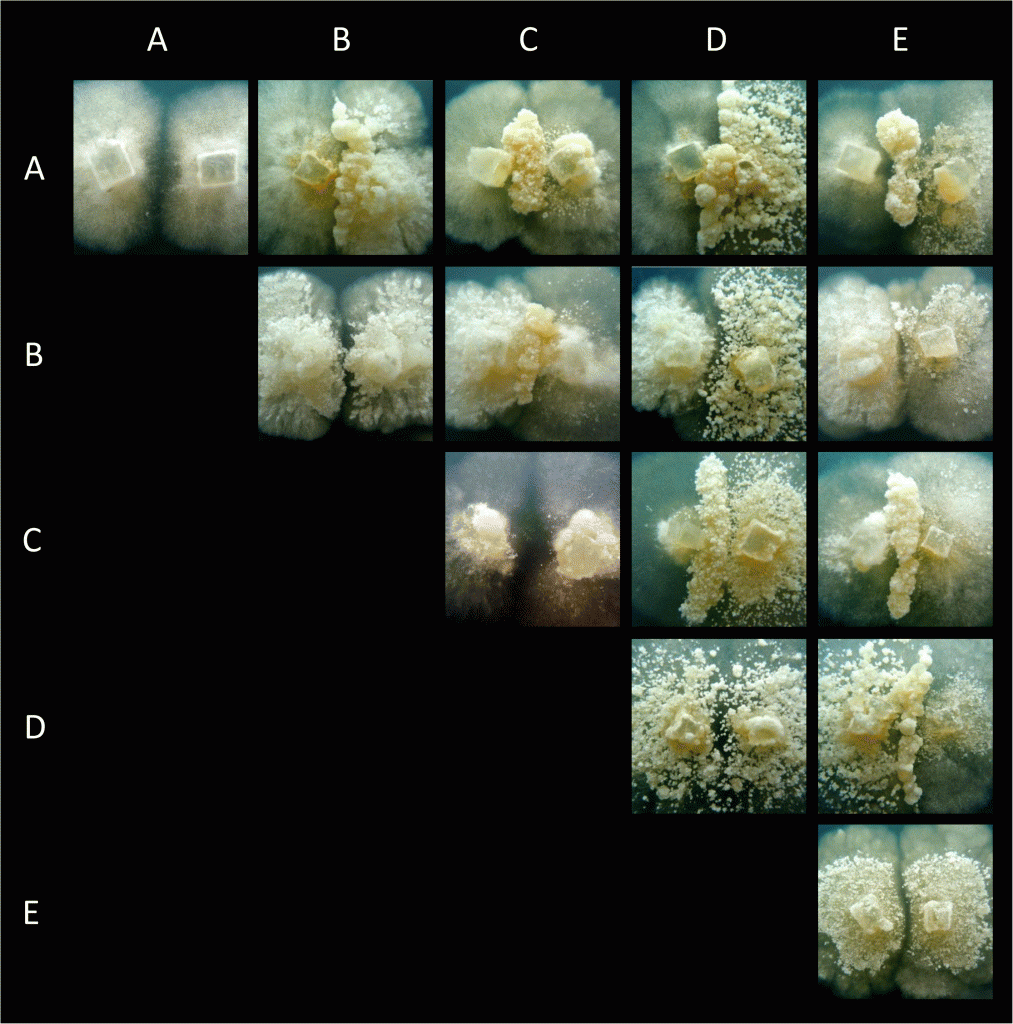 Interactions between five homokaryotic mycelia of the termite-grown fungus Termitomyces. From Nobre et al. 2014 “The scope for nuclear selection within Termitomyces fungi associated with fungus-growing termites is limited”.
Interactions between five homokaryotic mycelia of the termite-grown fungus Termitomyces. From Nobre et al. 2014 “The scope for nuclear selection within Termitomyces fungi associated with fungus-growing termites is limited”.
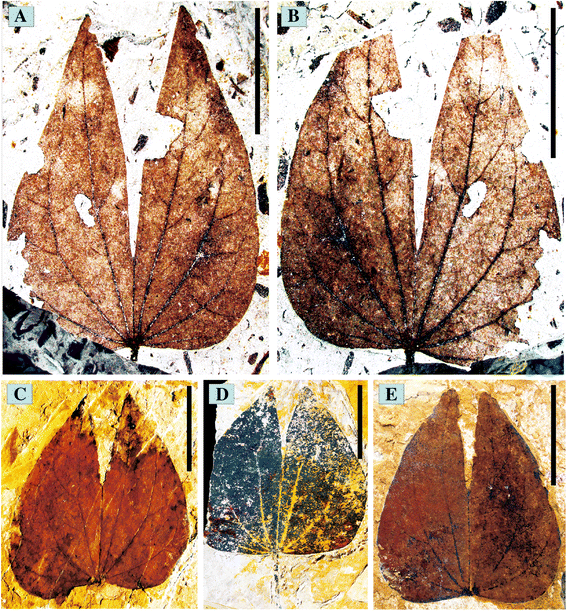 Fossilised leaves of Bauhinia wenshanensis. From Meng et al. 2014 “New biogeographic insight into Bauhinia s.l. (Leguminosae): integration from fossil records and molecular analyses”.
Fossilised leaves of Bauhinia wenshanensis. From Meng et al. 2014 “New biogeographic insight into Bauhinia s.l. (Leguminosae): integration from fossil records and molecular analyses”.
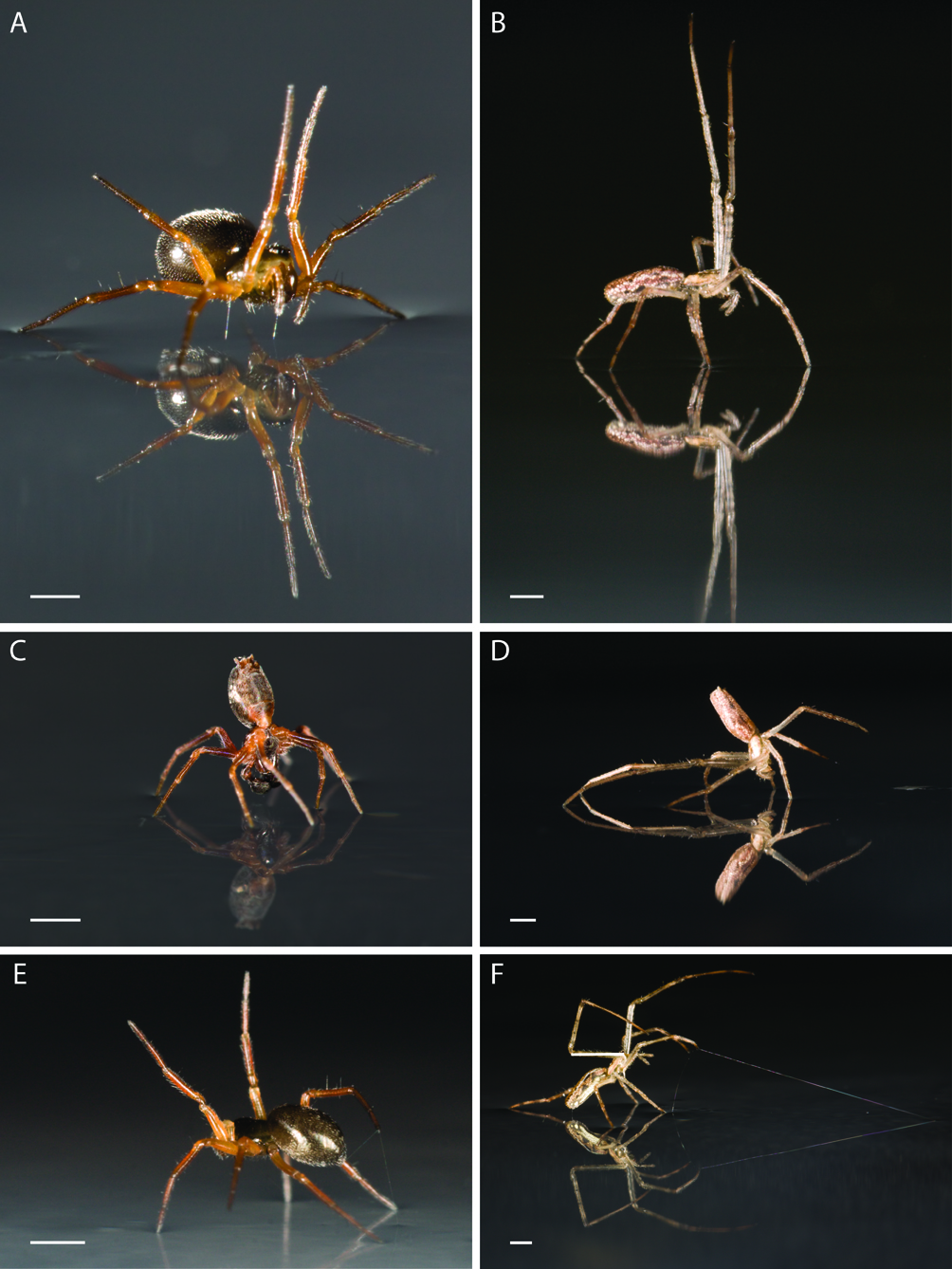 Behavior on water of ‘sailing spiders’. From Hayashi et al. 2015 “Sail or sink: novel behavioural adaptations on water in aerially dispersing species“.
Behavior on water of ‘sailing spiders’. From Hayashi et al. 2015 “Sail or sink: novel behavioural adaptations on water in aerially dispersing species“.

Range of the salamander ring species Ensatina eschscholtzii. From Devitt et al. 2011 “Asymmetric reproductive isolation between terminal forms of the salamander ring species Ensatina eschscholtzii revealed by fine-scale genetic analysis of a hybrid zone“.
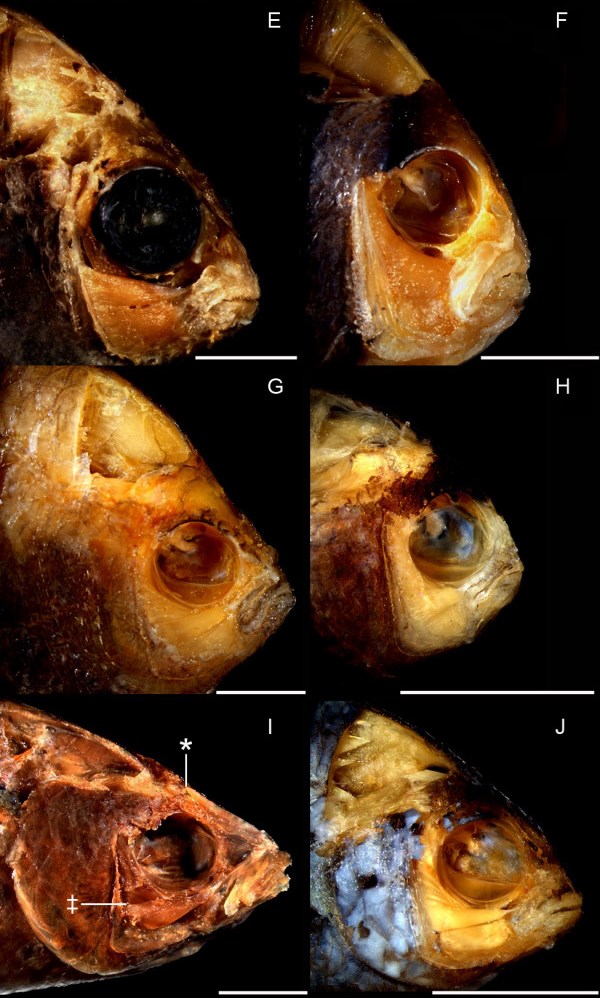
Pictorial descriptions of morphological extremes in damselfish. From Cooper & Westneat 2009 “Form and function of damselfish skulls: rapid and repeated evolution into a limited number of trophic niches“.
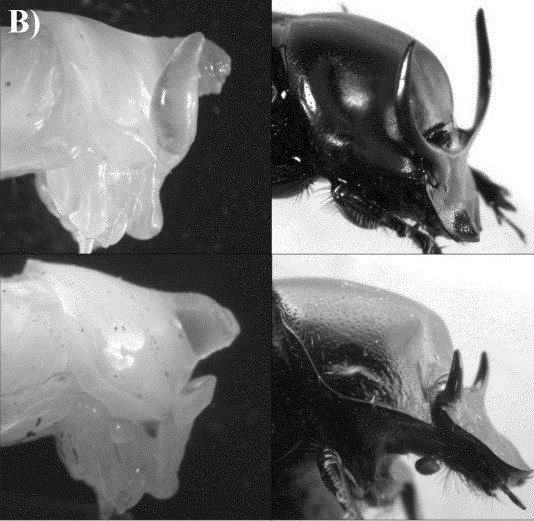 The horned beetle Onthophagus taurus: large horned males (top) and small, hornless males (bottom) as pupae (left) and corresponding adults (right). From Moczek 2007 “Pupal remodeling and the evolution and development of alternative male morphologies in horned beetles“.
The horned beetle Onthophagus taurus: large horned males (top) and small, hornless males (bottom) as pupae (left) and corresponding adults (right). From Moczek 2007 “Pupal remodeling and the evolution and development of alternative male morphologies in horned beetles“.
Comments